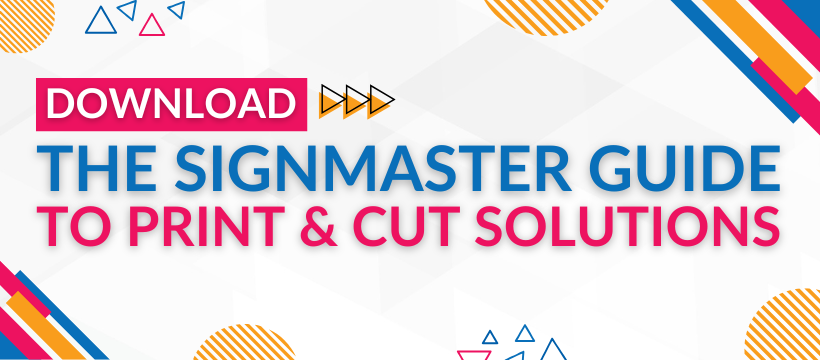
A Deep Dive Into The Difference Between UV Printers And Solvent Printers
If solvent printers are OGs of the print world, then UV printers are the new kids on the block disrupting things. While they’ve only entered the print industry in the last couple of decades, they’ve certainly shaken up the status quo and given printers up and down the country something to think about.
A Brief History Of Printing
A quick look back in time will tell you a lot about this technology. Back in the Seventies, Roland was busy producing electronic musical instruments but by the Nineties the company moved into producing inkjet printers, a technology then in its infancy. The first inkjet systems used water-based dyes but there was a problem – they had little resistance to sunlight and water, rendering them useless for the rapidly expanding signage and large format printing market.
Water-based pigment inks came next, a precursor to solvent inks used today. These inks were much more durable and more resistant to UV and sunlight. Solvent inks further improved the durability and longevity of prints, making them perfect for outdoor, long-term use and Roland led the way with its industry-transforming SOLJET SC-500 inkjet printer/cutter.
About the same time, interest was growing for UV printers. Although the tech was around in the Seventies it wasn’t until the Noughties that print manufacturers considered them for wider commercial purposes. The use of UV printers has exploded in recent years as demand for durable, high-quality, direct-to-media and eco-friendly printing has mushroomed.
UV Printer VS Solvent Printers: How They Work
Solvent printers use solvent-based inks to print onto media. These inks are created by mixing a solvent and a pigment to make a liquid ink. When this is applied it seeps into the substrate and binds with it. The solvent evaporates, leaving behind a hard layer of ink.
With UV inks, the ink sits directly on the surface, making it suitable for printing on a hugely diverse range of materials. UV light is used to cure the ink instantly so it can be handled or used immediately.
So, What Are The Advantages of UV Printing Over Solvent Printing?
Well, we’re glad you asked because there are several with the main one being drying time. Solvent printing requires drying time (gassing off) so there’s always downtime between the printing and then the finishing/laminating/cutting stages. With UV ink, it is cured immediately with a UV light and is ready to be finished straight away.
Another big plus point for UV printers over solvent is the impact on operators. As solvent inks dry, the solvent evaporates releasing chemicals into the air which can be toxic for workers and harmful to the environment. UV inks, in contrast, release no harmful substances.
UV printing is fast becoming the new gold standard in printing because of its sheer diversity – printers can print onto a myriad of curved and flat substrates, from glass and vinyl to mugs, wood acrylic and much more. Plus, the results are cleaner and crisper than solvent printers because the ink sits on the surface and is cured instantly rather than seeping into the substrate with potential droplet spread.
Should I Switch From Solvent Printing To UV Printing?
As with many technological advances the answer isn’t cut and dried. Both processes produce extremely high-quality, durable prints but it ultimately depends on the application.
Solvent printing is known for its wide colour range and rich, deep results as well as its ability to withstand harsh weather conditions. It is also highly resistant to fading, UV and water exposure. This makes it ideal for outdoor signage or products which will be subject to the elements or heavy usage.
With UV printers you get a highly detailed, but slightly raised, image because the colour sits on top rather than being absorbed by the substrate. It’s great for promotional items or products that require a premium finish. However, UV prints can be less flexible which means they’re not always the best choice for vinyl or prints that need to be stretched or wrapped.
Ultimately, it boils down to what products and services you offer most. If outdoor signage is your main revenue stream solvent printing will be the way to go. If you focus more on promotional products or packaging and need an all-round printer, then UV might be better.
Whichever route you choose, understanding the strengths of each technology will help you make the right investment for your business.
Need advice? Our team at Signmaster Systems is happy to help you find the perfect printer for your needs. Contact Us.




